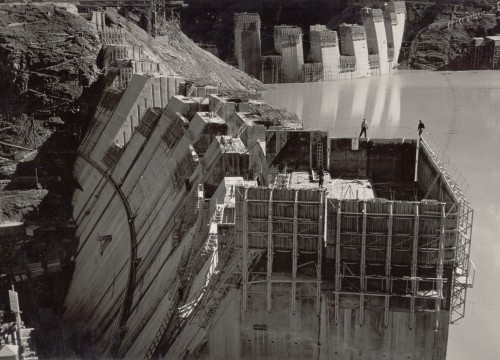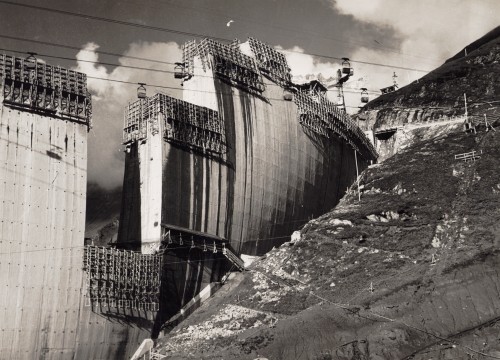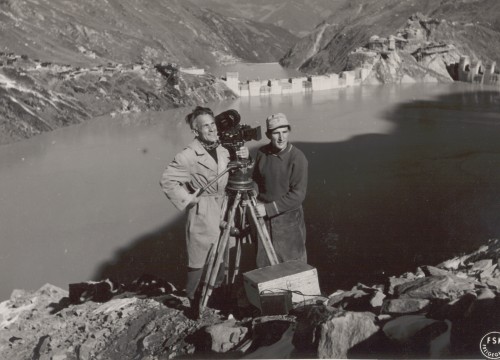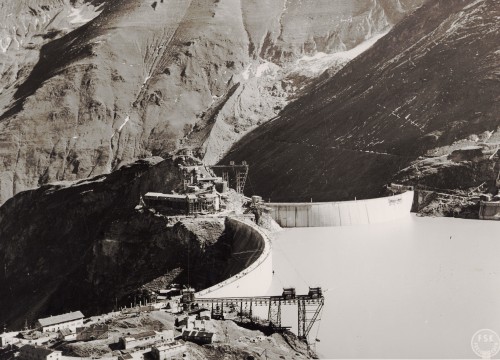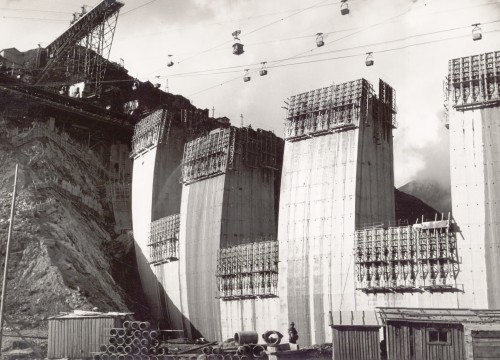Ai piedi del ghiacciaio che scende dal massiccio del Grossglochner, negli Alti Tauri, tecnici ed operai inalzano, a 2000 metri di altitudine, la più grande fra le dighe di Europa. Aprono le strade sussidiarie ad altezze spericolate; tendono arditissime teleferiche; scavano una galleria lunghissima, che coinvolgerà le acque del lago artificiale verso le turbine installate di là dalla montagna; impiantano le attrezzature che trasporteranno nelle regioni più lontane "l'Oro dei ghiacciai", vale a dire l'energia elettrica. Ogni due settimane è concesso a questi lavoratori una breve licenza: una giovane donna è salita fin quassù per salutare uno di essi, e assiste, stupita, all'opera immane che trasforma interamente l'aspetto, finora intatto, del paesaggio.
Director
LUIS TRENKER
He was born in 1892 in Ortisei/Sankt Ulrich, Val Gardena. Trenker was brought up in a land that had become Italian after the First World War, but that had always addressed the German world and was open to cultural exchanges with the Northern alpine arc. Trenker started his cinema career as an actor in 1926, and then continued as a director. He was obliged to move in contrasting and widely dispersed settings. Politically he had to manage between Nazi Berlin and fascist Rome, his work taking him to Tirrenia (the cinema city of strongly coveted by fascism) and New York as well as Austria and Germany. Trenker, nevertheless, never loosened his deep ties with Tyrol and his home valley. Trenker’s works were famous not only in the Alpine countries (Italy, Austria, Germany, France and Switzerland), but in all of Europe, as well as Mexico, Japan, Argentina and North America.
His filmography as a director includes: Il Prigioniero della Montagna (1955), Barriera a Settentrione (1949), Monte Miracolo (1943), Il Ribelle della Montagna (1940), Lettere d'amore dall'Engadina (1938), Montagne in fiamme (1937), La grande conquista (1937), Condottieri - Giovanni dalle bande nere (1937), L'Imperatore della California (1936), Il figliol prodigo (1934), Il grande agguato (1934) and I cavalieri della montagna (1929).
Gallery

